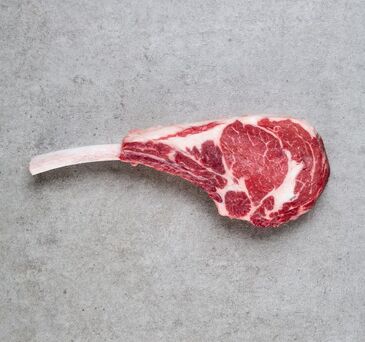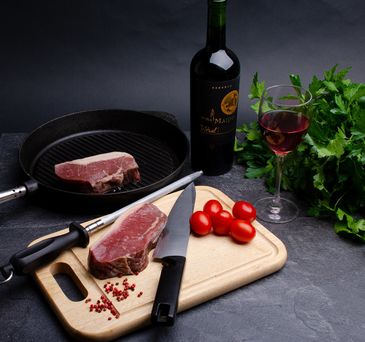Our Himalayan salt wall looks absolutely beautiful, doesn't it? Despite its beauty, it does so much more than look pretty in the dry-aging room.
Himalayan salt has been used as a preservative and a spice for centuries, but not many know that it has a role to play in the dry-aging of beef.
First of all, we should explain what dry-aging is, and what it does for the meat itself. Dry-aging is the process by which we reduce the moisture in the meat, resulting in a more tender and deeper flavour. Even if you're not big on steaks, you'd definitely be able to tell the difference between a steak that has been dry-aged and one that hasn't. Our dehumidifiers are some of the most sophisticated in the country, and our Himalayan Salt Walls are a huge part of this process.
The salt walls performs a few functions for the meat:
1. Reducing humidity - the air in the room needs to be extremely dry, in order to slow down the decay of the meat. This is why we can keep it in this room for such a long time, without there being any rot.
2. Antimicrobial properties - salt kills bacteria! Having this salt wall means that bacteria growth is much slower due to the salt in the environment.
3. Tenderising - the salt helps to actually tenderise the meat. It favours the breakdown of certain proteins in the meat, which means that it becomes softer and juicier to eat.
Our meat is dry-aged for at least 28 days (with the majority of items being dry-aged for 35 days, and some for up to 70+ days!). We keep the meat in our state of the art dry-aging chamber – using the salt wall, dehumidifiers, and all sorts of clever techniques to ensure that the flavour and texture are exactly how we want it.
DISCOVER OUR OTHER Articles

Showcasing Scotland 2024
13.03.2024 NewsRead MoreWe were absolutely delighted to attend Showcasing Scotland 2024, an annual event by Scotland Food and Drink

The Tomahawk Steak
10.02.2024 NewsRead MoreIn the world of premium cuts of meat, the tomahawk steak stands out—not just for its impressive size and flavour, but for the experience it offers both the cook and the diner. As butchers, we're...

Pairing Steak and Wine
31.01.2024 NewsRead MoreIf you're like us, you love the pairing of steak and wine. We often get asked about our recommendations for steak cuts and wine pairings, so we thought we would offer up some suggestions. Remember -...



